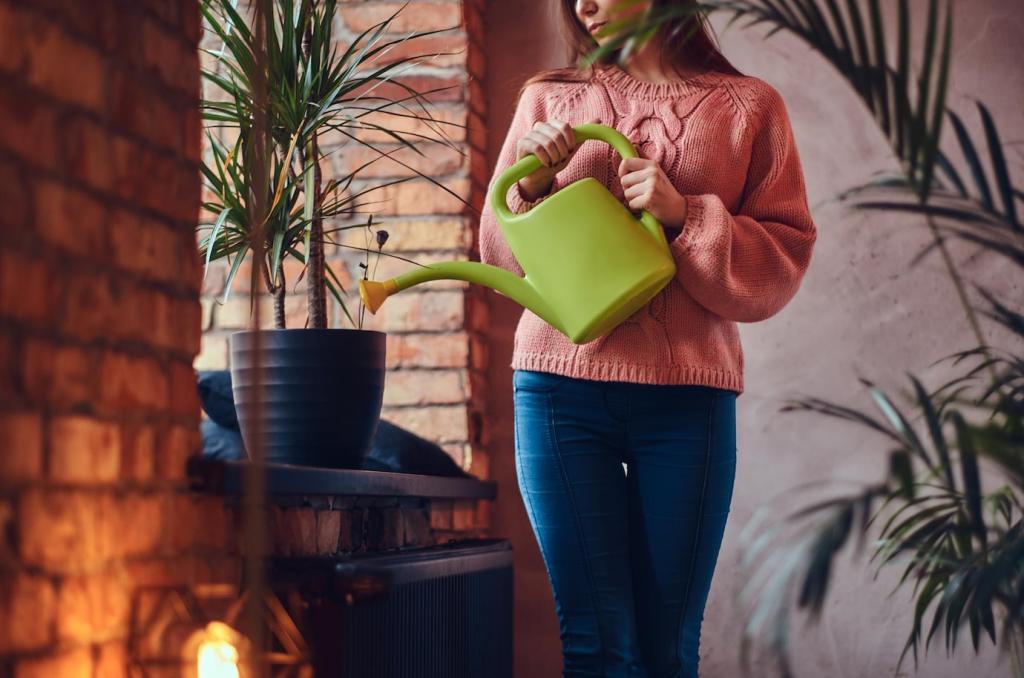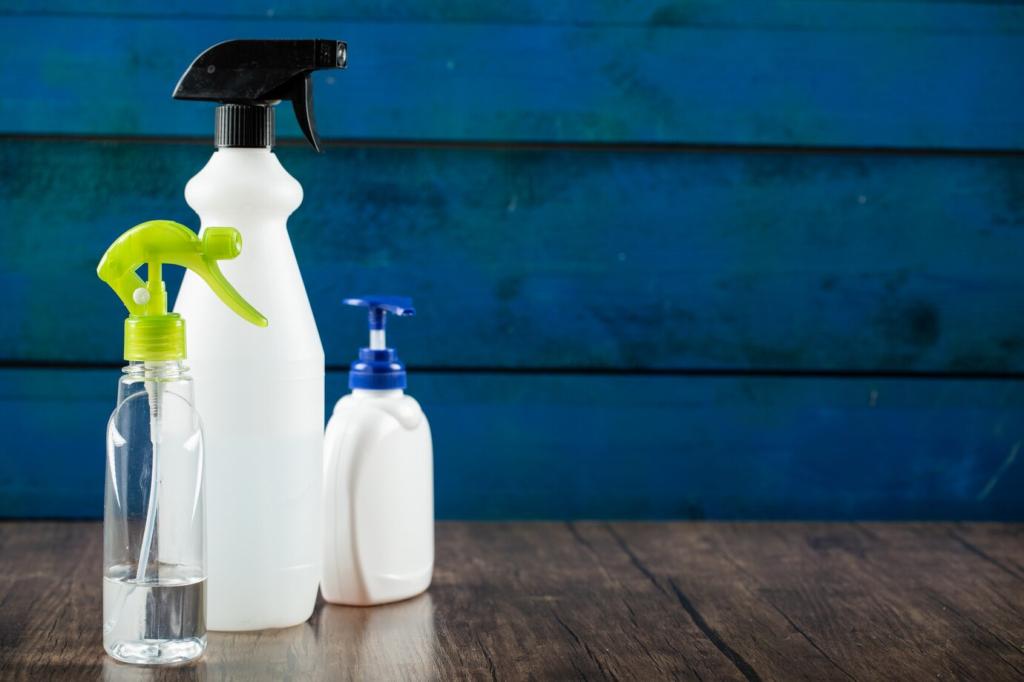Eco-Friendly Ingredients for Furniture Care
Chosen theme: Eco-Friendly Ingredients for Furniture Care. Welcome to a gentle, effective approach to preserving your furniture using natural, low-toxic ingredients that respect your home, your health, and the planet—all while keeping wood, metal, and fabric looking beautifully alive.
Why Greener Ingredients Matter for Every Room
From Forest to Home: A Respectful Cycle
A reclaimed oak table was dull and dry until a simple blend of beeswax and polymerized linseed oil restored its glow. The finish felt alive, not plastic. Every time we polish it, we’re reminded that caring gently extends the life of the wood’s original gift.


Healthier Indoor Air, Happier Mornings
Conventional polishes often carry harsh solvents and heavy fragrances that linger. Plant-based oils, castile soap, and natural waxes reduce unnecessary volatile compounds. Your space smells clean, not chemical—inviting you to linger with coffee and a book instead of opening windows to escape fumes.
Beeswax and Carnauba: The Natural Shield
Blending a Soft Wax Polish
Melt grated beeswax with jojoba oil in a gentle bain-marie, then add a pinch of hard carnauba for durability. Pour into a tin and cool. The result is a creamy polish that nourishes, protects, and leaves a subtly honeyed scent many readers adore.
Application and Buffing for Lasting Sheen
Work a pea-sized amount into wood with a lint-free cloth, following the grain. Let it sit for twenty minutes, then buff briskly. Multiple thin coats beat one heavy layer, delivering a satiny glow that resists fingerprints yet invites touch and daily use.
A Heirloom Story in Every Swipe
When Mara polished her grandmother’s cedar chest, the wax lifted decades of haze. Under the warm sheen, carvings reemerged, catching morning light. She wrote to us saying the chest now holds letters and lavender sachets—and a renewed sense of connection across generations.
Plant Oils That Truly Nourish Wood

Raw vs. Polymerized Linseed Oil
Raw linseed oil cures slowly, rewarding patience with depth. Polymerized linseed oil offers faster drying without metal driers often found in “boiled” varieties. Whichever you choose, apply very thin coats, wipe excess after fifteen minutes, and allow ample airflow for an even cure.

Tung, Walnut, and Hemp: Character Oils
Pure tung oil polymerizes into a tough, water-resistant film. Walnut oil leaves a warm tone and is food-safe when cured, though nut allergies merit caution. Hemp oil penetrates gently for a soft matte. Always spot-test on hidden areas to preview color and absorption.

Safety First with Oily Rags
Drying oils generate heat as they cure. Spread used rags flat outdoors to dry completely, or submerge in water inside a sealed metal container before disposal. This simple habit prevents accidental combustion and protects both your workshop and the memories it shelters.
Gentle Botanical Cleaners for Daily Care
Mix a teaspoon of liquid castile soap in 500 ml of warm water. Dampen, don’t soak, a microfiber cloth, then wipe and immediately dry. This simple solution lifts dust, fingerprints, and kitchen film without stripping oils or dulling waxed, varnished, or oiled finishes.


Gentle Botanical Cleaners for Daily Care
A mild vinegar solution can cut mineral film on sealed finishes, but avoid bare wood, stone tops, or shellac. Always dilute well, spritz onto a cloth—not the surface—and test first. When in doubt, choose castile soap and water to play it safe and gentle.
Baking Soda to Deodorize
Place a small open jar of baking soda in a closed cabinet overnight, or dust lightly into drawers and vacuum after twelve hours. It quietly absorbs stale odors and leaves a neutral canvas for cedar blocks, lavender sachets, or your favorite gentle herbal scent.
Tea Tree and Thyme: Botanical Defenders
These essential oils are known for antifungal properties. Add a few drops to a soapy water solution for wiping sealed interiors, then dry thoroughly. Always keep concentrations low, ventilate well, and patch-test to ensure finishes and sensitivities remain respected and comfortable.
Sunlight and Airflow Rituals
Open doors and drawers on a sunny morning, allowing cross-breezes to carry away humidity. Gentle light helps discourage mildew while preserving finishes. Share your best airing-out routine with our community—your rhythm might be the exact nudge another reader needs.


Upholstery and Fabric the Eco Way
Create light foam using soap nut liquid or diluted castile soap. Apply with a barely damp cloth, working in small sections, then blot dry. This gentle method lifts surface grime without saturating padding, reducing drying time and the risk of water rings or odors.
Upholstery and Fabric the Eco Way
For light-colored, colorfast fabrics, dab a small amount of 3% hydrogen peroxide on fresh stains, then blot with water and dry. Always test first. Pair with sunlight and airflow when possible. Tell us which fabric you’ve rescued—we love celebrating small, satisfying wins.
Eco Care for Metal Hardware and Details
Lemon and Salt to Lift Tarnish
For unlacquered brass or copper, cut a lemon, dip in salt, and massage gently. Rinse with a damp cloth and dry thoroughly. Avoid plated or lacquered surfaces. The method brightens metal while respecting the surrounding wood finish and your indoor air quality.
Olive Oil as a Gentle Buff
A whisper-thin film of olive oil on a soft cloth can revive dry-looking metal after cleaning. Buff until the surface feels dry, not greasy. This simple touch adds sheen, softens fingerprints, and helps hardware harmonize with freshly polished wood nearby.
A Quick Tale of Antique Handles
Nina’s flea-market find had ornate pulls hidden under green tarnish. A quiet afternoon with lemon, salt, and patience revealed their warm glow. She wrote that the dresser’s personality returned, turning a clutter-catcher into a space she’s proud to greet every morning.
Sourcing, Safety, and Simple Habits
Choose oils and soaps from transparent producers, favoring organic or fair-trade when possible. Refill containers, buy concentrates, and support local bulk stores. These habits reduce waste and send a clear signal to the market: quality, honesty, and stewardship matter to us.


Sourcing, Safety, and Simple Habits
Look for short ingredient lists you recognize—oils, waxes, botanical solvents, and real soap. Avoid vague “fragrance” blends when sensitivities are a concern. When labels feel cryptic, reach out to brands or our community. Collective curiosity raises standards and protects our shared spaces.
